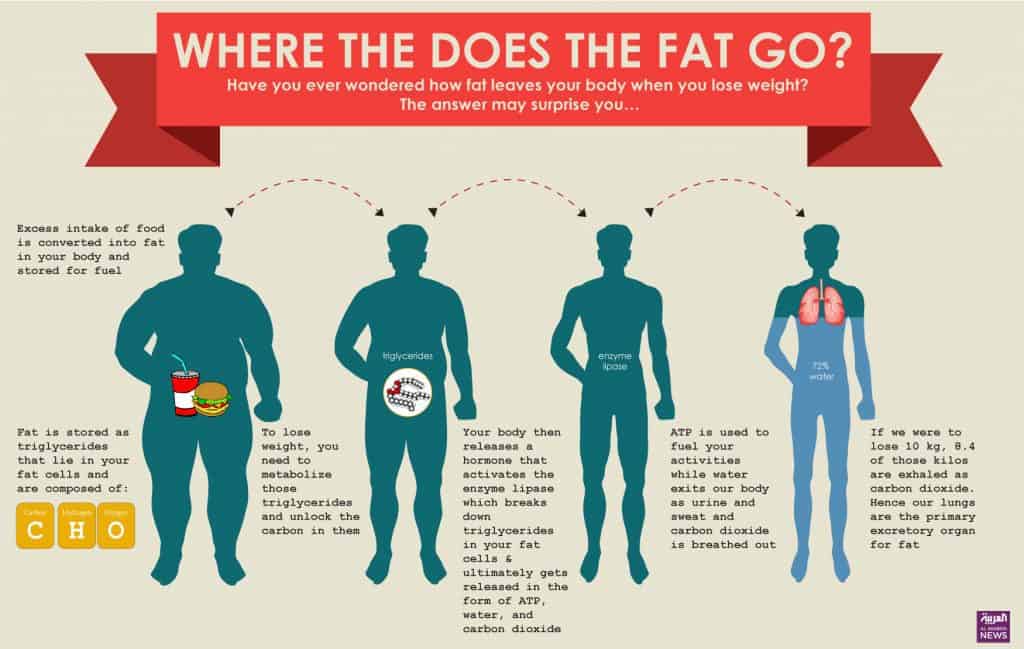Despite so many people obsessing about dieting and losing weight, there are still misconceptions about how our bodies actually lose fat. Some believe it is converted into muscle – if only that were true. The fact is, fat and muscle are two completely separate tissues. You can gain or lose fat, and gain or lose muscle, but you cannot turn one into the other.
Infographic: Where the does the fat go?

Others believe our body gets rid of fat by burning it off. Again, that cannot be true because if fat simply disappeared, that would violate the law of conservation of mass, which states that matter is neither created nor destroyed, but may alter its form through chemical reactions. So although fat does not just disappear, it can change forms.
Understanding fat storage
If it is neither burned off nor turned into muscle, where the does the fat go? You simply exhale it as carbon dioxide. To understand the mechanism behind this, we must first understand how fat is stored in the body.
Excess intake of food is converted into fat in your body as stores of fuel. More specifically, fat is stored as chemical compounds called triglycerides, which lie in your fat cells and are composed of carbon, hydrogen and oxygen. If you want to lose weight, you need to metabolize those triglycerides and unlock the carbon in them.
Burning fat
When you cut down calorie intake or burn excess calories through exercise, you create a caloric deficit, allowing your body to resort to its fat reserves as a source of fuel for energy. As a result, it releases a hormone that activates the enzyme lipase in your body that is responsible for fat breakdown or lipolysis.
Lipase works by breaking down triglycerides in your fat cells into smaller molecules, and ultimately gets released as energy in the form of ATP, water and carbon dioxide. ATP is used to fuel your activities, but what happens to water and carbon dioxide?
Water exits our body as urine and sweat, and carbon dioxide gets exhaled during respiration. During cellular respiration, we breathe in oxygen and breathe out carbon dioxide. So if we were to lose 10 kilograms, 8.4 of those would be exhaled as carbon dioxide, while the remaining 1.6 would be released as water. Hence, our lungs are the primary excretory organ for fat.
Does that mean we should breathe in and out more often? No, that will only put you at risk of hyperventilation. What it really means is what you already know about weight loss: eat less and move more. Next time you read about a massage that promises to break down fat, or an injection that liquefies it, remember that fat loss is a chemical reaction, not a physical one.

